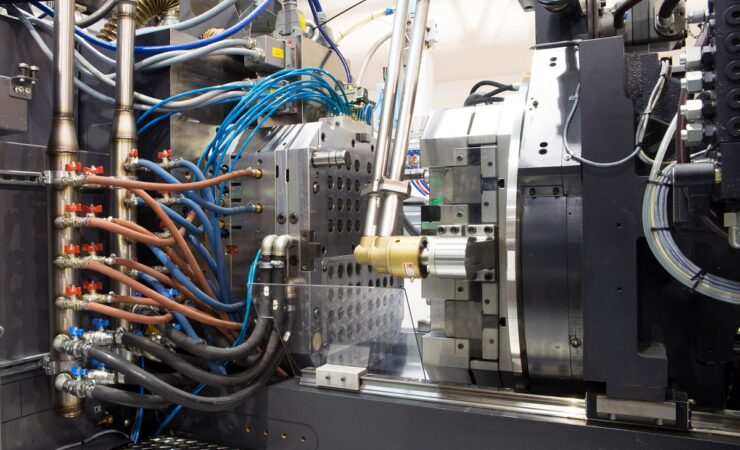
Injection molding machines in a large factory
When creating a military specification injection mold, it’s imperative to ensure the materials used comply with regulations and perform well for the application. An experienced full-service molder can help you choose the proper plastic materials and provide guidance for the design. Many of the characteristics of plastic are essential to the safety of service personnel and military equipment. By converting metal parts into plastic, you can improve the weight and portability of your gear while improving durability, stealth, electrostatic discharge, and ease of use.
The adaptability of military injection molds
When choosing the best molding solution for your next project, consider the specialized needs of your business and the materials you need to manufacture your products. Military-specific molds are cost-effective and made of engineering-grade thermoplastics that are highly resistant to bacterial growth, moisture, and diluted acids. In addition, these molds are lightweight, durable, and incredibly resistant to corrosion, abrasion, and extreme temperatures.
Military injection molds are typically made from plastic materials. Plastic is strong and lightweight, but it might need to be reinforced with additives to withstand the rigorous use it is put through. Some materials offer high chemical resistance, while others provide excellent electromagnetic shielding. Plastic molds can be customized to accommodate the application’s exact requirements, including color and finish requirements. In addition, military-grade plastic can be adapted for various environments and easily colored or finished. You may need to contact a military specification injection mold supplier near you to ensure you meet the standards.
Using hardened tool steel
If you’re a designer or a product developer, you’ve probably wondered whether using hardened tool steel for military injection molds makes any sense. While it is possible to use aluminum tooling for molds that are used for low production quantities, a hard steel mold is more durable. The material also holds its edge much longer. Hard steels are also better suited for molds that contain highly polished lenses.
A moldmaker might use hardened tool steel to make it easier to machine. While some tool steels are soft, others must be heat-treated to become rigid. This can improve the tool’s performance and extend its life. In addition, hard milling allows mold makers to eliminate secondary machining steps.
Using a metal insert
A Military specification injection mold using a metal insert is a unique way to manufacture a military-grade part. Unlike traditional injection molding, insert molding involves loading a metal preform into a mold and over-molding it with a thermoplastic material. The final component is then packaged and shipped shortly after the run is complete. The metal insert can be of various materials, including brass, stainless steel, nickel, bronze, and copper.
The process of insert molding involves molding plastic parts around a non-plastic part. The insert is usually a simple metal object but can also be non-metallic. This process allows for greater flexibility in different markets and incorporates partner technology into the process. The material you choose will affect the final product’s strength, weight, and durability.
Creating a snap-fit joint
Injection molding is the only viable method of producing a snap-fit joint in plastics. 3D printing, however, offers new challenges and opportunities. For one, this process allows for rapid delivery of a fully functional part without the time and cost of prototyping.
The first step in designing snap joints is determining how much deflection is required to make the snap-fit tightly together. To determine the deflection amount, consider the torsion force on the shaft. If the beam extends beyond the axis of the torsion bar, a seesaw mechanism will result. In the next step, design the snap-fit joint with the proper tolerances and design features.
Making a repeatable mold
When you want to create a military-spec part, you need a mold that fits these exact requirements. A military specification injection mold is made from engineering-grade thermoplastics, which resist moisture, bacterial growth, diluted acids, and abrasion. As a result, these parts are lightweight, durable, and highly resistant to corrosion and abrasion.
To make a mold that meets this exacting requirement, you must know the specifications for your parts. Plastics are tough to manipulate, so they need to be precisely matched to the exact specifications of your parts. However, today’s machine controls can make the process more robust, reducing production costs. While repeatability tests are expensive and complicated, you can use process data to determine the repeatability of a mold. For instance, you can use a machine’s uniform melt cushion and stable metering time as indicators of its quality.






